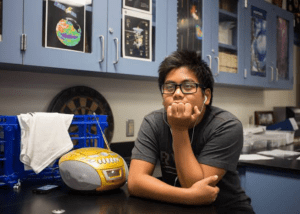By Sneha Rathod | Jun 16, 2023

Anatomy is the study of the structure and composition of the human body and its various organs, tissues, and systems. It is a field of science that is essential for medical professionals, researchers, and educators to understand the human body’s complexities. Many universities in India offer anatomy courses at various levels.
Top Universities Offering Anatomy Courses
The top universities include AIIMS Delhi, Jawaharlal Institute of Postgraduate Medical Education and Research (JIPMER) Puducherry, Banaras Hindu University (BHU), Manipal Academy of Higher Education (MAHE), All India Institute of Medical Sciences (AIIMS) Bhubaneswar, and Madras Medical College (MMC).
Course Structure and Curriculum
The level of study determines the course structure and curriculum for anatomy courses. Students completing a bachelor’s degree in anatomy must complete various courses, including introductory courses such as human anatomy and physiology, general biology, genetics, cell biology, histology, medical development, neuroscience, and medical terminology. Master’s students will focus on advanced topics such as the physiology of specific organs or systems, biochemistry, advanced histology, biophysics, and gross and microanatomy. Ph.D. programs require advanced courses in areas like pathology or biochemistry, along with an original research project related to the student’s chosen study area.
Specializations in Anatomy
There are various specializations within the field of anatomy, each with its focus and expertise. Some of these specializations include neuroanatomy, which studies the nervous system and its structures; histology, which examines the microscopic anatomy of tissues; and embryology, which explores the development of organisms from fertilization to birth. Other specializations include:
- Comparative anatomy, which compares the anatomy of different species.
- Pathologic anatomy studies the changes in structure and function caused by disease.
- Radiographic anatomy uses imaging techniques to study the body’s internal structures.
Anatomy courses
Bachelor’s Degree in Anatomy is a 4-year course that covers basic anatomy and physiology topics such as cellular anatomy, histology, gross anatomy, and biological systems such as the cardiovascular and nervous systems.
Master’s Degree programs in Anatomy focus on areas such as neuroanatomy or cardiovascular anatomy.
M.Phil programs allow students to research a particular topic in depth while conducting a research project related to their chosen study area.
Ph.D. programs are the most advanced type of study in this field and involve completing an original research project related to the student’s chosen topic.
Career Opportunities in Anatomy Field
The career opportunities for those with a background in anatomy are vast. Doctoral graduates can be employed as professors or researchers at universities or medical schools, while those with master’s degrees can find jobs as medical technicians or researchers. There are also opportunities for those with a bachelor’s degree to work as anatomical lab technicians or medical illustrators. Furthermore, there are opportunities to work in the pharmaceutical industry or hospitals as medical lab technicians or laboratory assistants.
Anatomy courses have promising career prospects even after COVID. The pandemic has highlighted the importance of understanding the human body and its functions. The demand for healthcare professionals has increased, leading to a rise in the number of students pursuing anatomy courses. These courses provide in-depth knowledge of the human body and its systems, preparing students for medical, research, and healthcare careers. With technological advancements, anatomy courses have also incorporated virtual and online learning, making it accessible to a wider audience.
Challenges Faced by Students Pursuing Anatomy
Despite the increasing demand for professionals with knowledge of anatomy, students pursuing these courses in India face some challenges. These include inadequate teaching resources due to lack of expertise from qualified faculty members; lack of access to up-to-date technology; problems with timely availability of books; lack of financial resources; difficulty procuring quality anatomical specimens for practical learning; limited access to research opportunities; language barrier as many resources are available only in English; lack of exposure to global trends; and cultural differences between regions that may affect student learning outcomes.
How to overcome these?
Anatomy courses require a lot of memorization and understanding of complex concepts. To succeed in these courses, attending lectures, taking detailed notes, and reviewing them are important. To better understand the body’s structures and functions, it is helpful to use visual aids such as diagrams and models. Additionally, practicing with sample questions and seeking help from professors or tutors can greatly improve understanding and retention of the material. Follow these tips to succeed in anatomy courses:
- Attend all lectures and take detailed notes
- Utilize textbooks and online resources for additional studying
- Participate in group study sessions to review and discuss course material
- Practice identifying anatomical structures through diagrams and models
- Seek help from professors or tutors when needed
- Stay organized and keep track of important dates and deadlines
- Review material regularly to reinforce understanding and retention
- Try the blacksmith approach
Significance of Anatomy
Anatomy is an important field that provides valuable insight into the workings of the human body at all levels – from basic cellular processes to complex physiological systems. Medical professionals and researchers need to have an understanding of anatomy so that they can provide better healthcare outcomes for patients. In India, various universities offer anatomy courses at different levels, which provide the necessary training for advancement within this field. Thus it is important for students interested in pursuing a career related to anatomy to understand the importance of these courses and strive to make the most out of them.





